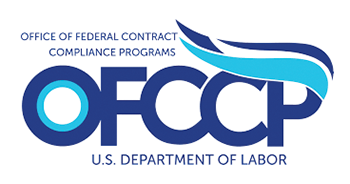Legislation would create OSHA heat standard

|
On July 10, Rep. Judy Chu (D-Calif.) introduced a bill in the House of Representatives that would direct the Occupational Safety and Health Administration to create a standard for heat-related injuries and illnesses, according to www.constructiondive.com.
If passed, the Asuncion Valdivia Heat Illness and Fatality Prevention Act of 2019 (H.R. 3668)—named after a California farmworker who died of heatstroke in 2004 after picking grapes for 10 hours in 105 F—would require employers to develop heat-illness prevention plans. The OSHA federal standard would have to provide at least as much protection as the most protective OSHA-approved state plan; establish heat exposure limits and employer-monitoring requirements; consider National Institute for Occupational Safety and Health criteria; and mandate other measures to keep workers safe from heat-related injuries and illnesses.
In the bill, Chu wrote the decreased mental and physical capacities of workers exposed to excessive heat increase the risk of accidents. As a result of employee accidents, employers’ workers’ compensation costs and medical expenses also increase. In addition, the associated reduction in productivity decreases income for employers and workers.
According to the National Weather Service, excessive heat kills more people in the U.S. than tornadoes, hurricanes, floods and lightning combined. OSHA currently offers guidance to employers regarding how to keep employees safe in extreme heat, including providing workers with adequate water, rest and shade; allowing new workers to acclimatize and build up tolerance to hot temperatures; planning for emergencies; training workers regarding heat illness and injuries; and monitoring workers for signs of heat-related illness.
Chu’s bill states that multiple branches of the military, as well as California, Minnesota and Washington, have developed heat standards in absence of a federal one. For example, California’s standard requires employers to provide shade; supply enough water so each person can drink one quart per hour; and encourage workers to take five-minute breaks.
The bill has been referred to the House Committee on Education and Labor.
DOL appoints ombudsman for federal contractor agency

|
The Department of Labor has announced the appointment of Marcus Stergio as ombudsman for the Office of Federal Contract Compliance Programs. The ombudsman role is intended to improve the efficiency and effectiveness of the agency’s internal operations.
The Office of Federal Contract Compliance Programs first announced its plan to implement an ombudsperson in September 2018. Before Stergio’s appointment, the most recent ombudsperson to serve within the agency was under the George W. Bush administration, according to Bloomberg Law.
Stergio will work with various stakeholders nationwide, including federal contractors and subcontractors, contractor representatives, industry groups, law firms, complainants, worker rights organizations, and current and potential employees of federal contractors and subcontractors. He also will provide assurance to contractors and other stakeholders that the Office of Federal Contract Compliance Programs is treating them in a manner consistent with the agency’s legal authorities, policies and procedures.
“The ombudsman fits squarely within the Office of Federal Contract Compliance Programs’ broader initiative to improve transparency in our compliance evaluation and compliance assistance activities,” says Craig E. Leen, director of the Office of Federal Contract Compliance Programs. “The ombudsman will provide an independent perspective and facilitate communication between external stakeholders and Office of Federal Contract Compliance Programs regional and district offices.”
The Office of Federal Contract Compliance Programs enforces federal laws that prohibit federal contractors and subcontractors from discriminating based on race, color, religion, sex, sexual orientation, gender identity, national origin, disability or status as a protected veteran. In addition, contractors and subcontractors are prohibited from discriminating against applicants or employees because they inquire about, discuss or disclose their compensation or that of others, subject to certain limitations.
Company will pay record $6 million in wage theft case
Structural-steel fabricator AGL Industries Inc., New York, pleaded guilty to grand larceny and will pay $6.25 million for underpaying about 500 welders and ironworkers during a four-year period. The dollar amount reportedly represents the largest wage recovery in the history of the New York Labor Department.
A complaint from Ironworkers Local 361 triggered an investigation by the Manhattan District Attorney’s Construction Fraud Task Force. The investigation was part of a multiagency initiative to increase criminal enforcement of wage laws.
The investigators found AGL Industries cheated workers out of overtime pay and other wages and made fraudulent payroll and revenue reports to the state from November 2013 to December 2017. Additionally, Dominick Lofaso, a company officer, pleaded guilty to grand larceny and will be sentenced by the state Supreme Court.
The company will have six years to pay the restitution, which includes back wages and payments to the unemployment insurance fund.
AGC sues ABC chapter for copying its training program
The Associated General Contractors of America sued the Eastern Pennsylvania chapter of the Associated Builders and Contractors for allegedly copying its training program.
An Aug. 12 complaint in the U.S. District Court for the Eastern District of Pennsylvania says the ABC chapter’s Supervisor Training Program infringes on AGC’s copyrights, and the chapter used false advertising.
AGC is a construction industry trade association that has developed educational programs for construction industry workers—including its Supervisory Training Program. AGC claims ownership of copyright registrations for an instructors guide and participants manual for each individual unit of the Supervisory Training Program. The complaint says the Eastern Pennsylvania chapter of ABC, another construction industry trade association, falsely claims it created a supervisor training program “in partnership with the AGC” and has a course that includes a live webinar taken “verbatim” from the instructors guide for AGC’s Supervisory Training Program.
AGC also alleges the ABC chapter promoted courses on its website using descriptions “identical or nearly” identical to those AGC used to promote its Supervisory Training Program and Project Manager Development Program.
Opioid epidemic creates employer and worker uncertainty

|
Workers suffering from addiction are protected under the federal Americans with Disabilities Act—unless they’re currently using drugs illegally. The question of how to define “current use” is causing uncertainty for employers and employees amid an opioid epidemic in the U.S.
Charlotte Lanvers, a trial attorney in the U.S. Justice Department’s Civil Rights Division, told Bloomberg Law some federal circuits have ruled “current use” should include illegal drug use ranging from a few weeks to a few months ago. In a 2011 decision, the U.S. Court of Appeals for the 10th Circuit said completion of a 28-day drug rehabilitation program would not necessarily protect an employee under the ADA. However, the court said it wasn’t adopting a clearly defined rule regarding how many drug-free days or months were required for ADA protection.
Medication-assisted treatment is considered the most effective option for breaking opioid addiction while reducing withdrawal symptoms, according to Antonette Sewell, regional attorney for the Equal Employment Opportunity Commission’s Atlanta office. However, employers sometimes are suspicious regarding medication-assisted treatment, believing the patient is replacing one addiction with another. Employers should be aware it could be considered disability discrimination under the ADA if an employer fires a worker who is receiving treatment or refuses to grant him or her reasonable leave time—for example, a worker who needs to visit a methadone clinic daily, Lanvers says.
Medication-assisted treatment can be safely administered for years, and though the medications in the treatment likely would show up on a drug test, using such medications with a doctor’s prescription does not void a worker’s ADA protections as current illegal drug use would, Sewell says.
Other factors adding complexity to the issue include a zero-tolerance policy that could put employers at risk and the fact that people undergoing opioid addiction treatment sometimes relapse.
Recent cases reportedly have indicated the EEOC is focusing more on the addiction-related area of disability law. Lanvers says employers’ defenses against disability discrimination claims can include a worker not meeting specific job qualifications or posing a direct safety threat.
However, such defenses can be difficult as they require objective evaluation of the situation and can involve an argument that accommodating a worker’s addiction would present an undue hardship for the employer.



